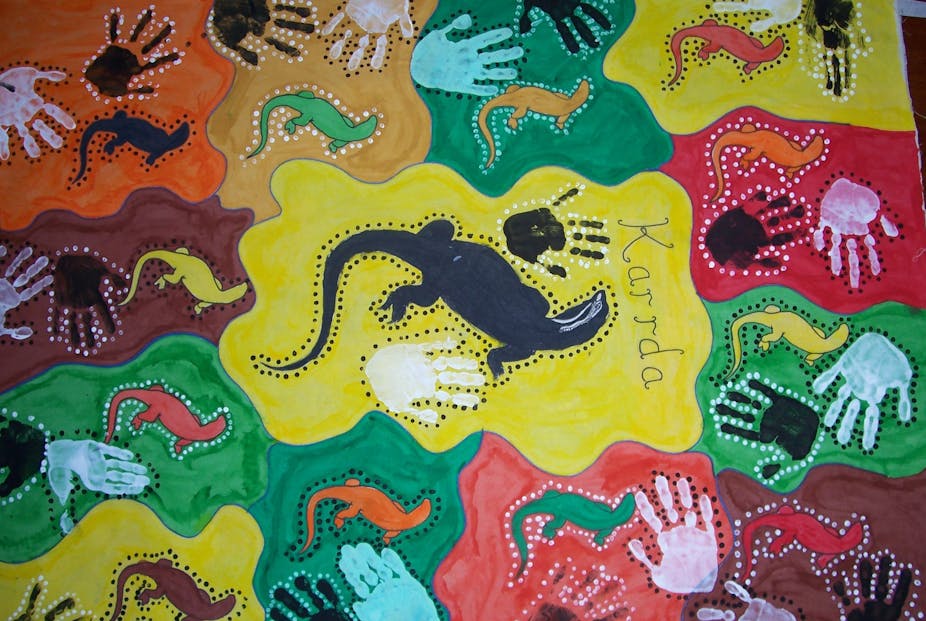In all the discussion, media releases, press conferences and TV coverage of this week’s government response to the Gonski review, it was fascinating that the issue of Indigenous education rated such little mention.
More than the divisions between private and government schooling, the division between the access and experience of education by Indigenous families and non-Indigenous families is most telling about quality and equity in Australia’s schools.
We know there are strong links between low achievement and socio-economic positioning and a growing gap in achievement between those achieving highly and those at the bottom of the scale. But Indigenous students lose out on both counts: they are over-represented in the bottom quartile of achievement and there is a growing distance between their achievement and those at the top.
You would think this would be at the forefront of concerns but the government’s response provided little detail in this area. That is until fortunately The Australian newspaper reported that “the government told The Australian” they would change the Gonski recommendation funding for Indigenous schooling. Instead of the recommended loading for schools with 5% - 25% Indigenous student enrolment with a sliding scale to 100% Indigenous, the government now apparently will fund every Aboriginal and Torres Strait Islander child in a school.
The overall direction of the announcements Monday and this reassurance on Tuesday were a welcome reversal of a slide in overall education funding per student in which Australia was well below average of OECD countries’ funding. However, we still do not know any details of what is yet to be discussed with the states and territories.
At the moment, we know nothing about the standard base-funding formula per capita to be made available to all schools; the basis of deciding the loading for disadvantage; and the processes for accountability.
Until these core issues are negotiated and made public, it will be almost impossible to tell what differences the funding will make for Indigenous education - particularly whether there is any likelihood of decreasing the gap between Indigenous students and the higher socio-economic students currently privileged in school curriculum and access.
Improvements in Indigenous education will require significant injections of money. As the Gonski report noted, many Indigenous children experience multiple and deeper forms of disadvantage than other groups. Previous targeted programs from states, territories and the Commonwealth have not provided the necessary funding, nor the flexibility and stability of funding, which are required to reverse more than 200 years of colonial treatment.
However, money alone will not make the difference needed. As the National Congress of Australia’s First Peoples this week welcomed the government’s positive response to their criticism of the initial Gonski proposal, a spokesperson also underscored the relationship between funding, community-school connection and culturally relevant curriculum:
“Our children perform well at school when the connections between families, home and school are strong, when quality teachers are in front of classes, when curriculum is culturally relevant and inclusive, and when school infrastructure and resources are tailored to local circumstances.”
For remote and regional schools with large numbers of Indigenous students, high teacher turnover, an over-representation of inexperienced teachers, lack of familiarity with Indigenous languages and cultural protocols, and lack of Indigenous teachers all add to the problem of culturally irrelevant curriculum and teaching methods.
As importantly, there are few schools in provincial cities or metropolitan areas where Indigenous students receive the kind of curriculum or culturally appropriate learning and teaching that would raise the overall levels of achievement. Aboriginal and Torres Strait parents have often had a history of poor relations with schools, yet need to be involved in their children’s education, formally and informally.
As the National Congress itself noted in response to Gonski, ATSI peoples need to be represented on the stakeholder group which decides funding and accountability processes, as well as at the local school level. The Howard government’s removal of the Aboriginal Student Support and Parent Awareness scheme in the 2005-2008 funding cycle significantly undermined Indigenous parent engagement in schooling and will need to be replaced, with links from local groups to Australia-wide policy and program decisions.
So while everyone waits to find out the details yet to be negotiated – and the timeline for even beginning the process is lengthy – education for Indigenous students receives only sporadic attention.
Early learnings from the government’s National Partnership programs appear to have something to say but this will need expert advice which is currently in short supply in most states and territories, which have been reducing their education infrastructure.
Indigenous Education simply cannot afford to wait until 2025 for the level of improvement needed.

